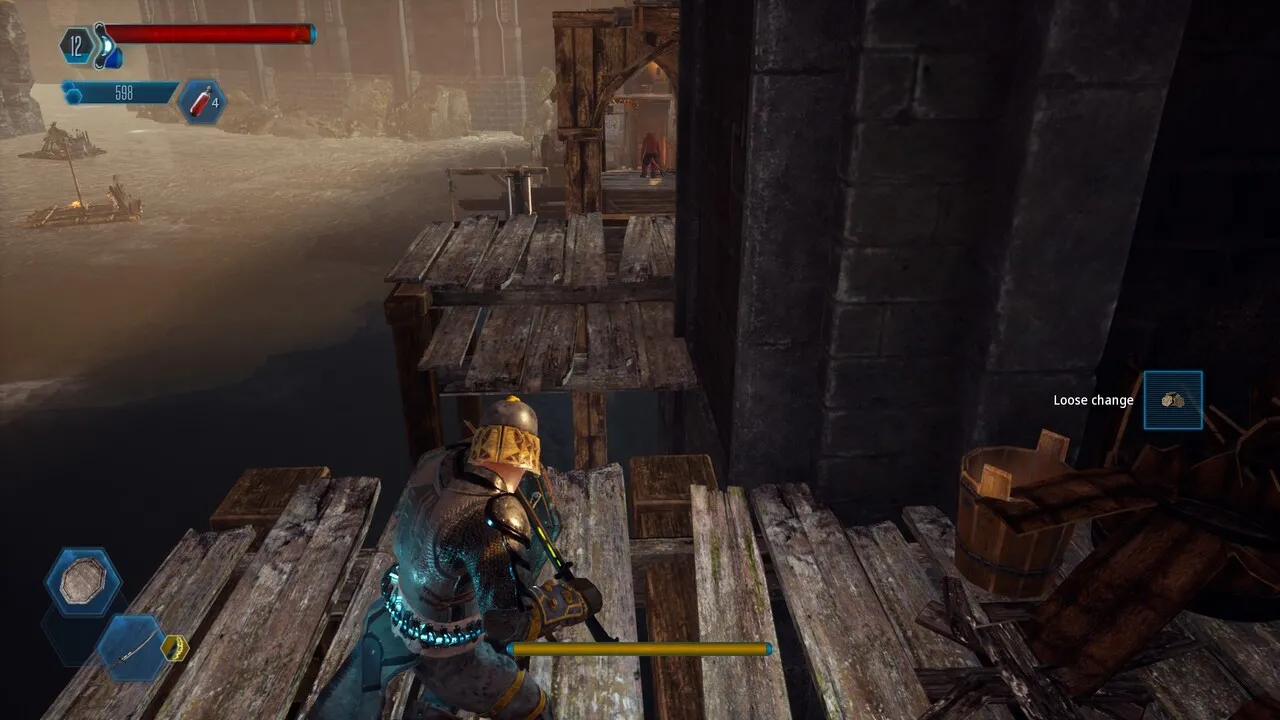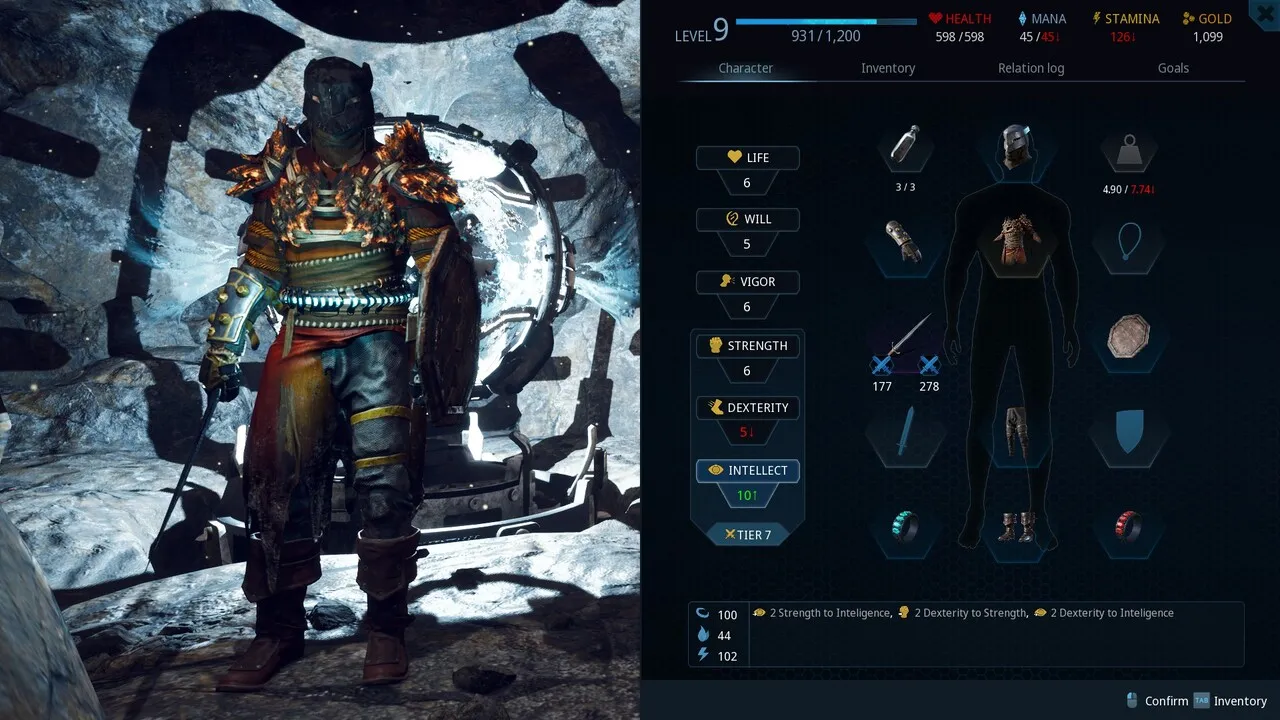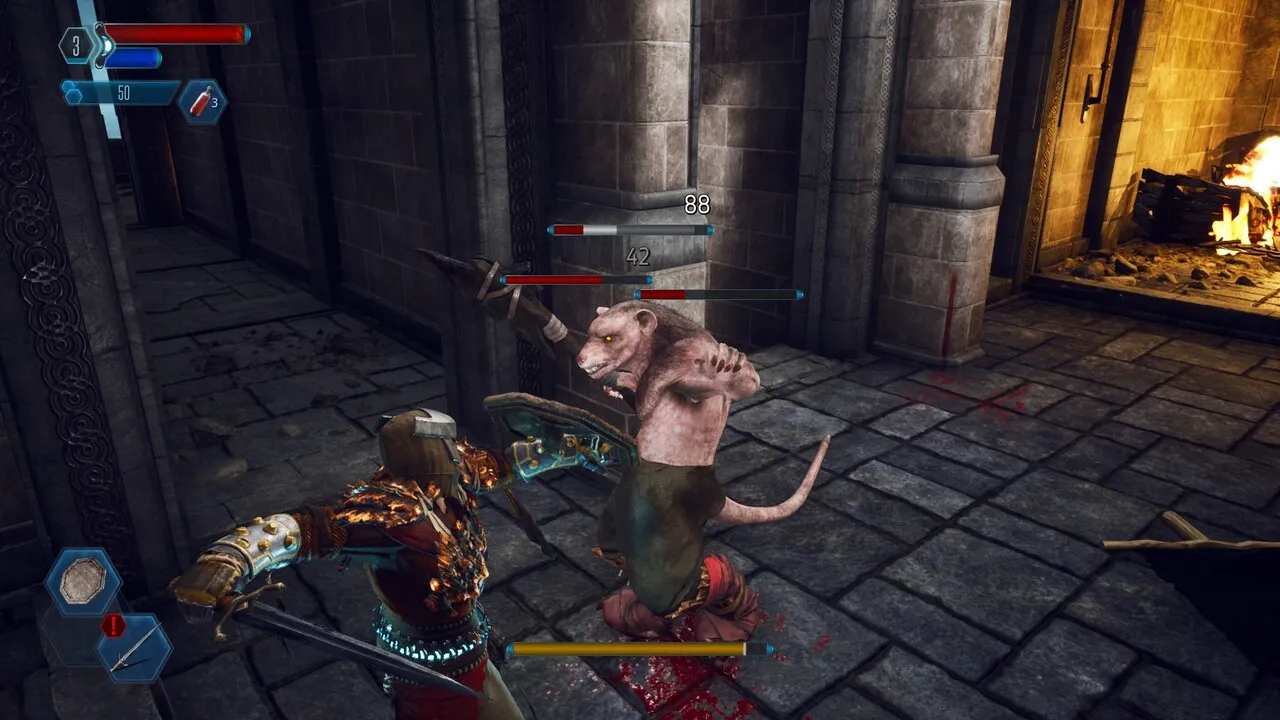
The Last Oricru Review: A Promising Narrative Bogged Down by Technical Issues
Contents
The “Souls-like” genre, known for its challenging action RPGs pioneered by FromSoftware with titles like Dark Souls and Elden Ring, has seen a surge in popularity. Many developers are now embracing this formula, with recent examples including Asterigos: Curse of the Stars and Steelrising. Joining these ranks is The Last Oricru from GoldKnights, blending science fiction and medieval fantasy with a non-linear narrative driven by player choice. Does The Last Oricru live up to its potential? Let’s delve into this review to find out.
 The Last Oricru gameplay screenshot showing the player character in combat.
The Last Oricru gameplay screenshot showing the player character in combat.
A Compelling Narrative with Branching Paths
The Last Oricru immerses players in a medieval fantasy world where humanity is nearly extinct, absorbed into an ancient civilization. A war rages between the human-like Naboru and the Ratkin, a sentient race of rat-like creatures capable of magic who have been enslaved for centuries. As one of the few remaining humans granted immortality, the player character must find their way back to their mothership while caught in the crossfire of this conflict.
What sets The Last Oricru‘s narrative apart is its branching storyline shaped by player decisions. Unlike narrative-driven games like Telltale’s The Walking Dead or Detroit: Become Human, choices in The Last Oricru have significant consequences, impacting characters and the overall war’s trajectory. For instance, early in the game, Queen Hadrina questions the player about a hidden lightning spear. Revealing its location earns the player the royal army’s alliance, granting safe passage through their territories, but at the cost of becoming the Ratkin’s enemy. This choice unlocks exploration within the castle without fear of attack but closes off other potential alliances.
 The Last Oricru gameplay screenshot showcasing the environment and the player character.
The Last Oricru gameplay screenshot showcasing the environment and the player character.
Depending on these choices, some side quests open up secret paths, even allowing players to bypass main story missions. This dynamic narrative structure makes The Last Oricru a true “choices matter” experience with high replay value.
Frustrating Design Flaws Hamper the Experience
While The Last Oricru boasts intriguing concepts and a rich environment reminiscent of AAA RPGs like The Witcher 3 and Assassin’s Creed Valhalla, its execution suffers from significant shortcomings. The level design is a prime example. Numerous, often strategically placed, bottomless pits plague the game, especially in combat-heavy areas. Players must constantly be mindful of these hazards, lest they plunge to their deaths and restart from the previous checkpoint, facing the same enemies again.
The lack of a map and vague NPC directions exacerbates this issue, forcing players to memorize intricate layouts. Finding specific locations or items becomes a tedious exercise in trial and error.
 The Last Oricru gameplay screenshot showing a combat scene.
The Last Oricru gameplay screenshot showing a combat scene.
The combat system borrows heavily from Souls-like mechanics, including stat upgrades and bonfire-like checkpoints. However, the implementation feels unrefined. Enemy attack patterns are inconsistent, sometimes overly swift, other times sluggish. Some boss battles can lock players in a stun after the first hit, making evasion near impossible. Conversely, other encounters are surprisingly easy, requiring only repetitive button-mashing to win.
While the game offers a variety of equipment, items, and stats typical of the genre, the UI is clunky and poorly explained. Information regarding defensive gear, like armor and helmets, is vague and seemingly inconsequential. Item descriptions are often unclear, requiring players to seek out blacksmiths to understand their functions.
 The Last Oricru gameplay screenshot showcasing the game's inventory system.
The Last Oricru gameplay screenshot showcasing the game's inventory system.
Technical Issues Plague the Game
The Last Oricru is riddled with technical glitches that detract from the overall experience. Graphical issues and poor optimization lead to frequent frame rate drops, particularly in detail-rich areas like cities, villages, and especially during combat sequences with multiple effects. Frame rates can plummet by over 50%, sometimes even freezing momentarily.
 The Last Oricru gameplay screenshot displaying another combat scene.
The Last Oricru gameplay screenshot displaying another combat scene.
Other bugs include controller input failures, unintended character sprinting during combat, and enemies becoming immune to magic damage, rendering ranged magic weapons useless. These issues frequently occur during boss battles, disrupting the flow of the game and causing frustrating roadblocks.
Conclusion: A Missed Opportunity
The Last Oricru presents a compelling narrative with meaningful choices, but its potential is severely undermined by frustrating design flaws and pervasive technical issues. While the core concept and branching storyline are engaging, the clunky combat, inconsistent level design, and numerous bugs create a jarring and ultimately unsatisfying experience. With some serious polish and bug fixes, The Last Oricru could be a worthwhile addition to the Souls-like genre. As it stands, however, it falls short of its promise.





Comments (0)